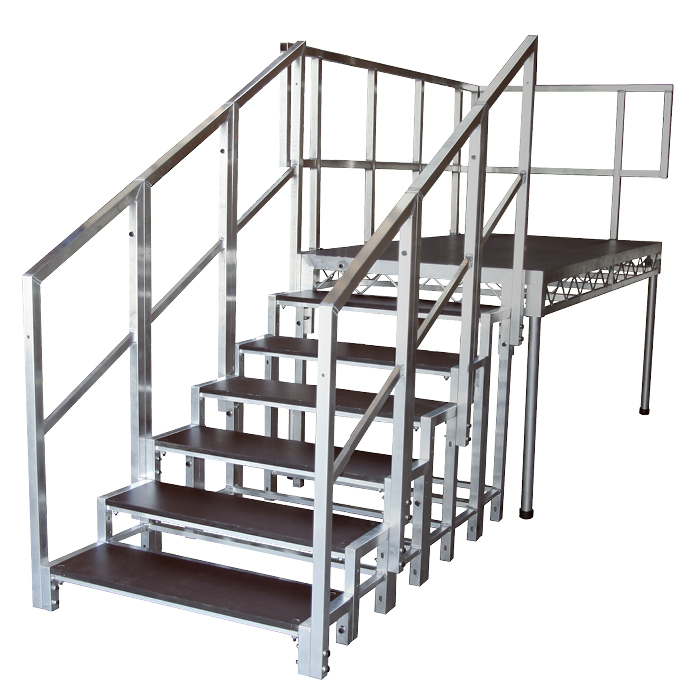Maintaining consistent height in steps is critical for several reasons related to safety, ergonomics and usability.
In this video below, in one of the most iconic stadiums in the world, the Maracanã has one step inconsistent to the rest of its set of stairs.
Outlined in the Australian Standard 1657 – 4.3.1 – Rises And Goings, all risers and goings on the same flight of stairs should have uniform dimensions within a tolerance of ±5mm.
Ensuring consistent step heights reduce the risk of tripping and falling. When steps have varying heights, individuals may misjudge the height, leading to stumbles or falls.
Structural and Engineering Standards:
Staging structures need to meet certain engineering and structural requirements for safety and stability. Relevant Australian Standards may include standards related to structural engineering, steel structures, and temporary structures:
- AS 4100: Steel Structures
- AS 1170.0: Structural Design Actions - General Principles
- AS/NZS 1170.2:2011: Wind actions
Safety Standards:
Ensuring the safety of performers, crew, and the audience is paramount. Australian standards related to safety may cover aspects such as working at heights, load-bearing capacities, and emergency procedures. Examples include:
- AS/NZS 1576 series: Scaffolding
- AS 1657: Fixed platforms, walkways, stairways, and ladders - Design, construction, and installation
Stage steps are a crucial component of stages and platforms used in the entertainment and events industry. They provide safe and accessible means for performers, crew, and other personnel to access the stage.
Global Truss is recognised for its aluminium truss and staging systems, including various truss configurations and accessories like ground support, base plates, connectors and more. Their stage steps are typically constructed using high-quality materials such as aluminium to ensure durability, strength and safety.
Stage steps should comply with safety standards and guidelines to ensure the safety of users. This might include compliance with load-bearing capacities, step dimensions, anti-slip surfaces and other safety features.
AS 1657:2018 is an Australian Standard titled "Fixed platforms, walkways, stairways, and ladders - Design, construction, and installation." It provides guidelines and requirements for the design, construction, and installation of fixed platforms, walkways, stairways, and ladders to ensure safety and structural integrity.
AS 1657 Standards: For risers, the minimum dimensions are 130 mm, and the maximum is at 255 mm. For the going dimensions, the minimum is at 215 mm while the maximum is at 355 mm.

Key aspects covered in AS 1657:2018 include:
- Design and Construction Requirements:
- Specifications for the design and construction of fixed platforms, walkways, stairways, and ladders, considering factors such as load-bearing capacity, materials, and structural stability.
- Safety Features and Dimensions:
- Guidelines for ensuring safety features such as handrails and guardrails are properly designed and installed.
- Requirements regarding the dimensions and clearances for steps, platforms, and handrails to maintain safe usage.
- Materials and Finishes:
- Global Truss Performer Stage steps are built using lightweight aluminium frame with a non-slip surface to ensure resistance and durability.
- Installation Guidelines:
- Instructions and recommendations for the proper installation of temporary and permanent platforms, walkways, stairways, and ladders to ensure structural integrity and safety.
- Load Requirements:
- Load requirements and factors that need to be considered during the design to ensure the structure can safely support the expected loads.
AS 1657:2018 is a crucial standard for anyone involved in the design, construction, or installation of fixed platforms, walkways, stairways, and ladders in various industrial, commercial, and public settings. Adhering to this standard helps ensure the safety and reliability of such structures, ultimately preventing accidents and injuries.

